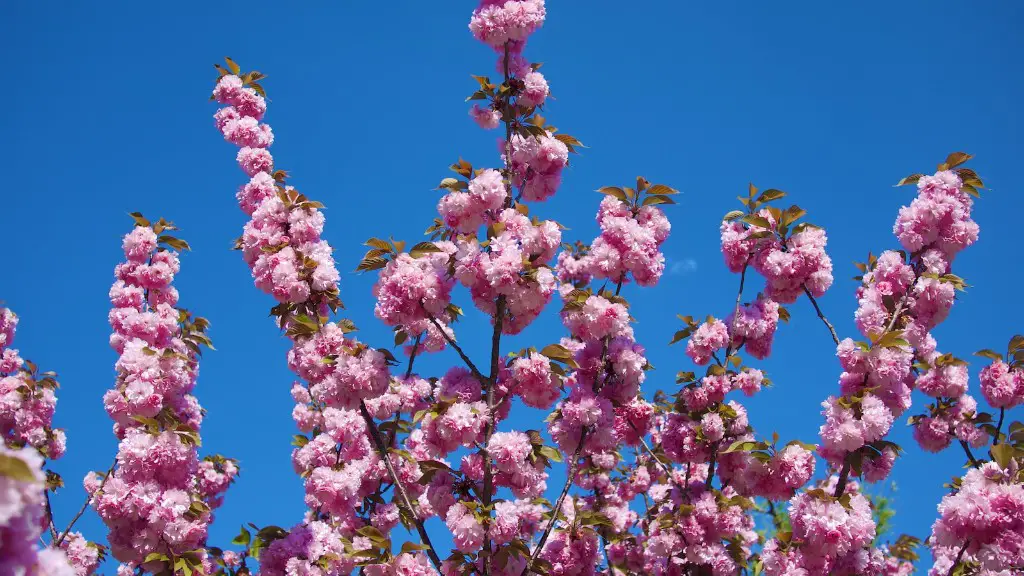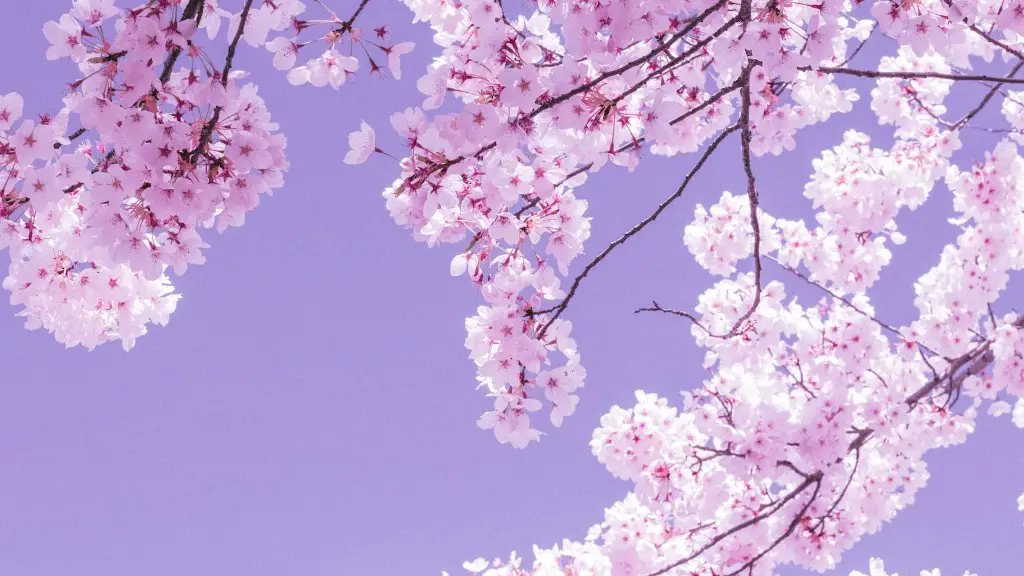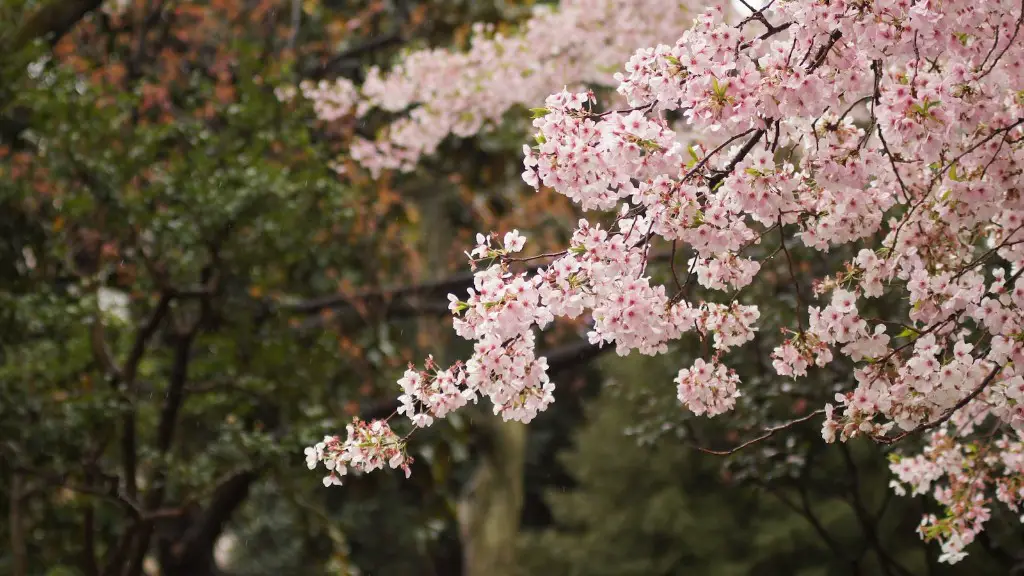Basic Tools and Techniques
Staking a weeping cherry tree is not hard, but it needs to be done with care and attention. The most important part is to identify what type of weeping cherry tree you have as this will determine the tools you will need. A cherry tree can be staked with a stake and guys, or with additional support loops around it if the roots are weak or shallow. Generally, bamboo poles and nylon string are all you will require. Whichever method is used, you should always be careful not to snap off a branch or damage the trunk with too much pressure.
Before staking the tree, it is important to make sure the soil around the tree is firm and not overly wet or dry. This helps ensure that the stakes can support the tree throughout the staking process. Once your soil is in good shape, you can begin staking the tree. If you are using stakes and guys, make sure to drive the stakes in at a slant and make sure they are firmly in the ground. Alternatively, if you are using additional support loops, make sure to wrap them around the tree carefully and avoid putting too much strain on any one part of the trunk.
Ensuring Stability
After staking the tree, it is important to ensure that the stakes are at the correct height and in the right position. This helps create a strong and stable base for the tree to grow. You should also make sure the guy wires or support loops are the right length and tightness, otherwise the tree can become unstable. To test for stability, gently push on the tree and check for any movement or instability. If the tree moves, adjust the stakes or loops until the tree is completely stable and secure.
If you are staking a weeping cherry tree in an area prone to high winds and storms, you may need to use additional supports such as weights or larger stakes. This helps ensure the tree is not damaged by the wind, as well as helping to keep the tree in its desired shape.
Maintenance
Once the tree is staked, it is important to inspect the tree regularly to check for any damage caused by the staking. Make sure to check the stakes and loops regularly to ensure they are still securely in place and that they are not putting too much pressure on the tree trunk. Additionally, regularly check the soil around the tree to make sure it is still in good condition and is not overly wet or dry.
Removing Support
When the tree has grown and is stable enough to stand on its own, you can remove the stakes and supports. This should be done gradually, with the largest stake being the first to be taken out. Doing this helps ensure the tree can become completely independent and not be overwhelmed by a sudden lack of support. Additionally, by removing the support gradually you can help shape the tree as it grows and ensure it keeps the desired shape.
The Importance of Mulch
It is important to mulch the tree to help protect the roots and help promote healthier growth. Mulching helps retain moisture in the soil and protect the tree from changes in temperature. Additionally, it helps reduce the chances of weeds and other pests harming the tree, keeping it healthy and vibrant. Make sure to apply a layer of mulch at least 5-7cm thick, and don’t forget to check it regularly to ensure it hasn’t over-mulched as this can cause damage to the tree.
Pruning and Pruning Tools
Finally, when staking a weeping cherry tree, it is important to prune and shape the tree as it grows. This helps ensure the tree remains healthy and that it retains its desired shape. Pruning should be done carefully, however, to avoid damaging or removing too many branches. The best pruning tools for a weeping cherry tree are pruning shears, loppers and a saw. Make sure to use these tools with care and not to prune too much at any one time as this can shock and damage the tree.
Important Considerations
When staking a weeping cherry tree, there are several important considerations that should be kept in mind. Firstly, make sure the soil around the tree is firm and not overly wet or dry. Secondly, make sure the stakes and loops are the right height and in the right position. Thirdly, make sure to regularly check the stakes and loops for any damage or instability. Fourthly, make sure to mulch the tree to help protect the roots and promote healthier growth. Finally, make sure to prune and shape the tree carefully as it grows to help retain its desired shape. All of these considerations can help you ensure your weeping cherry tree can thrive and become a healthy and vibrant addition to your garden.
Adequate Watering and Fertilizing
When staking a weeping cherry tree, it is important to ensure it receives the correct amount of water and fertilizer. To ensure that the tree is able to absorb the necessary nutrients, make sure to water the tree thoroughly and deep root fertilize it at least once every 2-3 months. Additionally, weeping cherry trees need to be pruned or shaped on a regular basis to ensure its desired shape is retained for longer.
Insects and Pests
Weeping cherry trees can be vulnerable to pests and insects, particularly during the springtime when fruit buds are forming. This can be a major problem, as the loss of fruit buds can mean the tree is unable to produce any fruit that season. To help protect your tree against insects and pests, make sure to regularly check for signs of infestation and take steps to prevent or control the problem.
Pruning in Winter
Finally, weeping cherry trees are best pruned in winter, when the tree is dormant. This helps ensure that the tree is not shocked or damaged by winter frost, as well as allowing it to focus on storing nutrients and energy necessary for flowering and fruiting in the spring. Pruning in winter also helps retain the desired shape of the tree and can help encourage stronger, healthier growth in the coming seasons.


